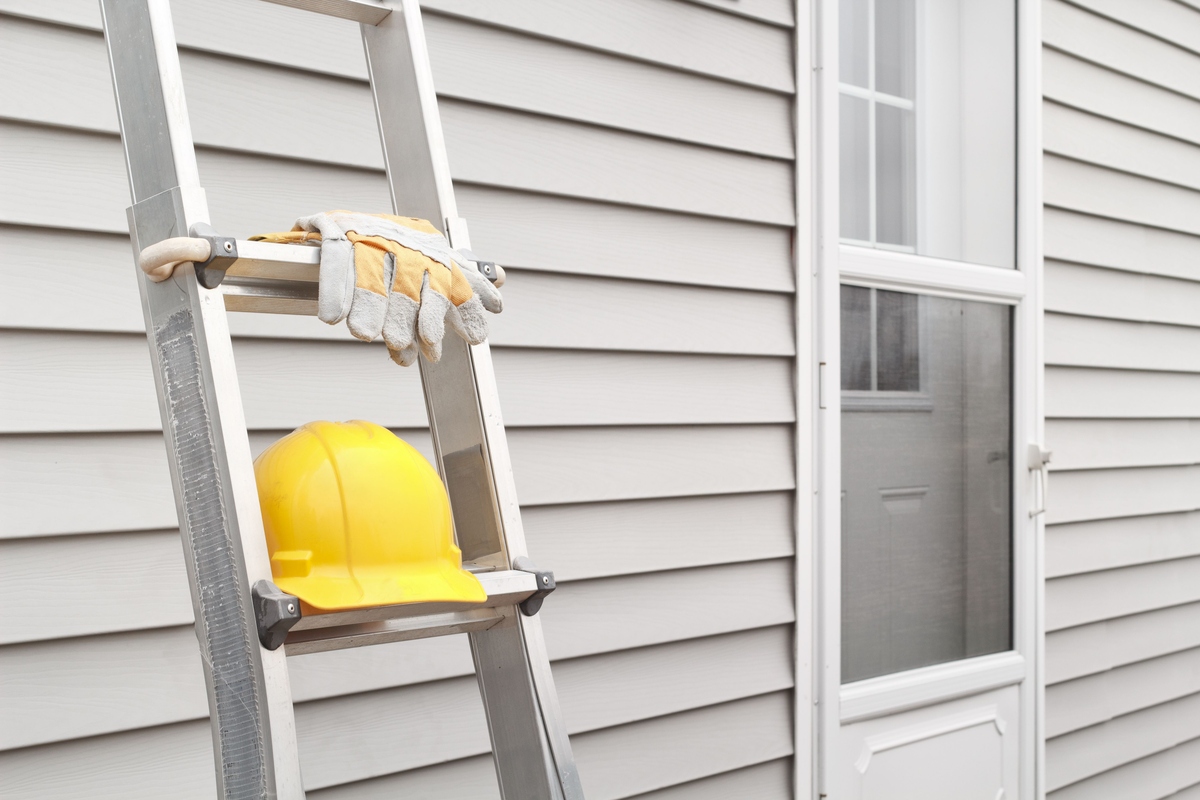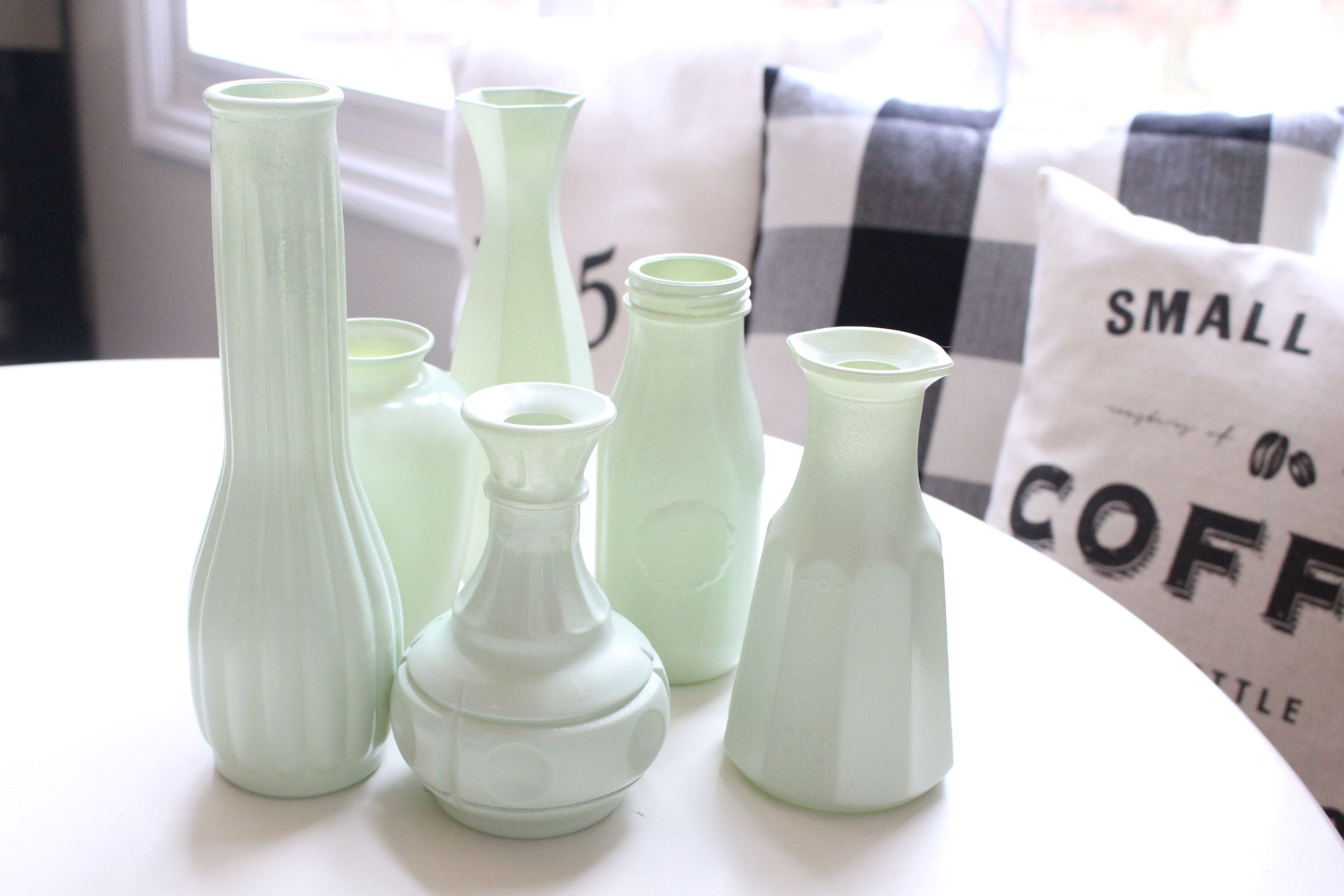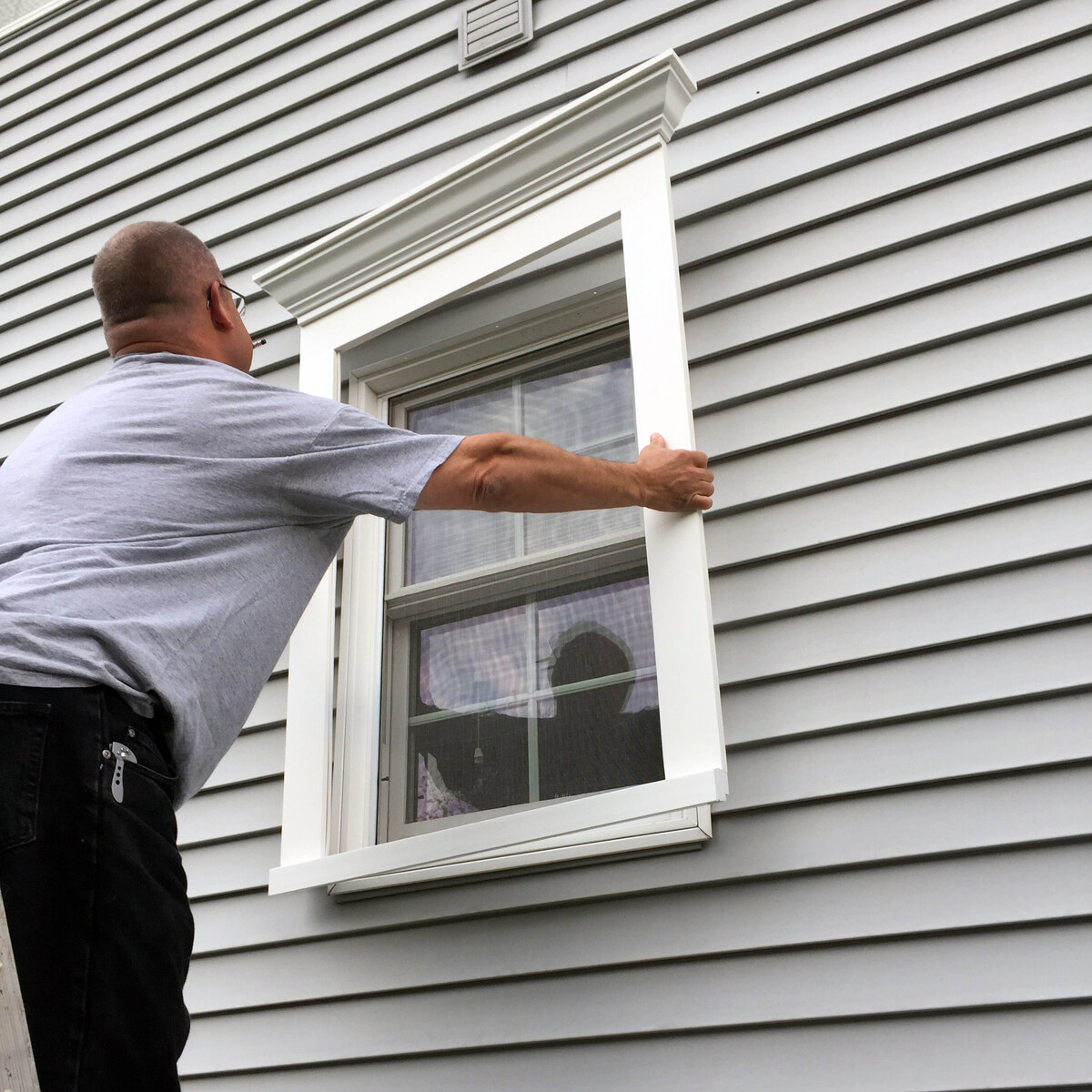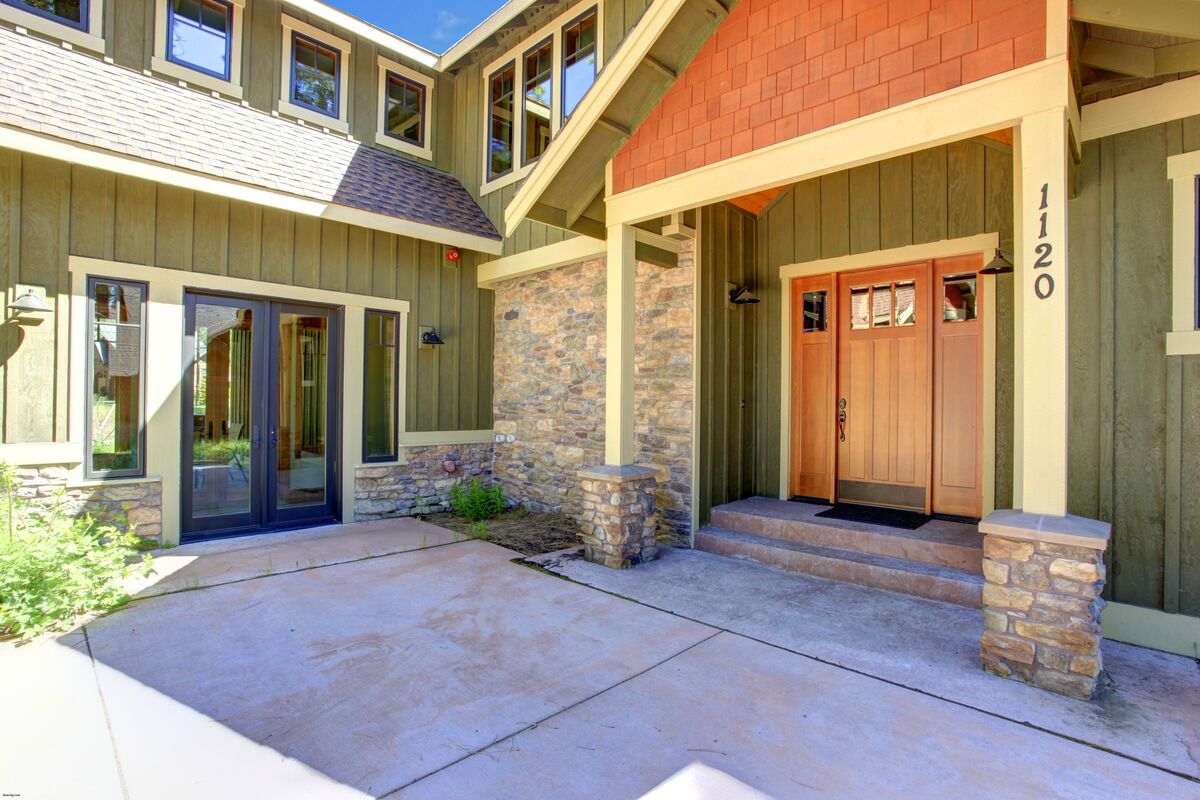

Articles
When Did Vinyl Siding Become Popular
Modified: October 28, 2024
Learn about the rise of vinyl siding and its popularity throughout the years. Explore articles that delve into the history and benefits of this durable exterior cladding.
(Many of the links in this article redirect to a specific reviewed product. Your purchase of these products through affiliate links helps to generate commission for Storables.com, at no extra cost. Learn more)
Introduction
Vinyl siding has become a popular choice for homeowners looking to improve the aesthetics and durability of their homes. This versatile material offers various benefits and has a unique history with advancements in technology that have made it even more appealing. In this article, we will explore the origins of vinyl siding, the advancements in technology that have contributed to its popularity, the benefits it offers, and the factors that have led to its rise in popularity among homeowners.
Key Takeaways:
- Vinyl siding’s popularity surged in the late 1950s due to its low maintenance and durability. Advancements in technology have further enhanced its appeal, making it a cost-effective, versatile, and visually appealing choice for homeowners.
- Despite common misconceptions, vinyl siding offers numerous benefits, including low maintenance, durability, energy efficiency, and versatility in design. Its rising popularity can be attributed to its affordability, ease of installation, and potential increase in home value.
Read more: When Did Glass Windows Become Common
Origins of Vinyl Siding
Vinyl siding originated in the late 1950s as an alternative to traditional materials like wood, aluminum, and cement. It was first introduced as a lightweight and low-maintenance option for exterior cladding. The early versions of vinyl siding were made of PVC (polyvinyl chloride) resin, and their popularity grew rapidly due to their durability and ease of installation.
During the 1960s, advancements in manufacturing processes allowed for the production of vinyl siding in a range of colors and textures, making it a more visually appealing option for homeowners. This development brought about a significant increase in the demand for vinyl siding as it offered an affordable way to transform the exterior of a home.
In the following decades, vinyl siding continued to evolve, with manufacturers incorporating better quality materials, such as additives that increased its resistance to fading, warping, and cracking. The introduction of new technologies also improved the appearance and performance of vinyl siding, making it a highly sought-after choice for homeowners.
Advancements in Vinyl Siding Technology
Over the years, significant advancements have been made in vinyl siding technology, making it a reliable and durable option for homeowners. These advancements have greatly contributed to the popularity of vinyl siding. Here are some notable innovations in vinyl siding technology:
1. Improved Durability: Early vinyl siding was susceptible to cracking, fading, and warping. However, advancements in technology have resulted in the development of more robust vinyl siding options. Manufacturers now incorporate additives and stabilizers that enhance the vinyl’s resistance to harsh weather conditions, UV rays, and impact damage.
2. Enhanced Color Retention: One common concern with vinyl siding was its tendency to fade over time. To address this issue, manufacturers have perfected the formulation of vinyl siding, incorporating color-fast pigments and protective coatings that significantly improve color retention. This means that homeowners can enjoy vibrant and long-lasting colors on their exteriors.
3. Realistic Textures: Vinyl siding has come a long way in terms of emulating the look and feel of traditional materials, such as wood. Through advancements in technology, manufacturers have been able to create vinyl siding panels that closely resemble the texture and grain of natural wood. This allows homeowners to achieve the desired aesthetic without the maintenance requirements of wood siding.
4. Improved Installation Systems: Installing vinyl siding has become easier and more efficient, thanks to innovations in installation systems. One such advancement is the introduction of interlocking panels, which ensure a secure fit and eliminate the need for nails or screws. Additionally, precision-cut corners and trim pieces have made the installation process more seamless and visually appealing.
5. Energy Efficiency: Another significant advancement in vinyl siding technology is the incorporation of insulation materials that improve energy efficiency. Insulated vinyl siding contains a layer of foam insulation that helps to reduce heat loss and improve the overall energy performance of the home. This can result in lower heating and cooling costs for homeowners.
These advancements in vinyl siding technology have made it a highly durable, low-maintenance, and visually appealing option for homeowners. With a wide range of colors, textures, and styles available, vinyl siding offers versatility and the ability to customize the exterior of a home to suit personal preferences.
Benefits of Vinyl Siding
Vinyl siding offers numerous benefits that make it a popular choice among homeowners. Here are some of the key advantages of vinyl siding:
1. Low Maintenance: One of the biggest advantages of vinyl siding is its low maintenance requirements. Unlike other cladding materials, such as wood or brick, vinyl siding does not need regular painting, sealing, or staining. It is resistant to rot, peeling, and insect damage, saving homeowners time and money on maintenance.
2. Durability: Vinyl siding is engineered to withstand various weather conditions, including wind, rain, and extreme temperatures. It is resistant to fading, warping, and cracking, ensuring that it maintains its appearance for years to come. Additionally, some vinyl siding options come with warranties that provide additional peace of mind to homeowners.
3. Versatility: Vinyl siding is available in a wide range of colors, textures, and styles, allowing homeowners to achieve the desired look for their homes. Whether you prefer a traditional, rustic, or contemporary aesthetic, there is a vinyl siding option to suit every style.
4. Cost-effective: Vinyl siding is an affordable option compared to other cladding materials like wood or brick. Not only is the initial installation cost lower, but the long-term savings on maintenance and repairs make it a cost-effective choice for homeowners.
5. Energy Efficiency: Insulated vinyl siding, which incorporates a layer of foam insulation, can improve the energy efficiency of a home. It helps to reduce heat loss in winter and keep the home cooler in summer, resulting in potential energy savings and increased comfort.
6. Eco-Friendly: Vinyl siding is a sustainable choice for environmentally-conscious homeowners. It can be recycled at the end of its lifespan, reducing waste. Additionally, the energy efficiency of insulated vinyl siding can contribute to a more environmentally-friendly home by reducing energy consumption.
7. Easy Installation: Vinyl siding is relatively easy to install, especially with advancements in installation systems. Homeowners can choose to hire professional installers or even take it on as a DIY project, saving on installation costs.
Overall, vinyl siding offers a cost-effective, low-maintenance, durable, and visually appealing solution for homeowners. Its versatility and energy-efficient properties make it a popular choice for those seeking to enhance the appearance and functionality of their homes.
Vinyl siding became popular in the 1950s as a low-maintenance and cost-effective alternative to traditional wood siding. Its popularity grew in the 1970s due to advancements in manufacturing and design.
The Rise in Popularity of Vinyl Siding
In recent years, vinyl siding has experienced a significant rise in popularity among homeowners. Several factors have contributed to this trend, making it one of the top choices for exterior cladding. Here’s why vinyl siding has become increasingly popular:
1. Aesthetics: With advancements in technology, vinyl siding now offers a wide range of colors, textures, and styles that can mimic the look of traditional materials. Homeowners can achieve the desired aesthetic, whether it be a classic or contemporary look, without the high maintenance requirements of materials like wood or brick.
2. Cost Savings: Vinyl siding is an affordable option compared to other cladding materials. The initial installation cost of vinyl siding is lower, and its low maintenance requirements help homeowners save on painting and repair expenses over time. This cost-effectiveness is especially appealing to budget-conscious homeowners.
3. Durability: Vinyl siding is known for its durability and ability to withstand the elements. It is resistant to fading, cracking, and warping, which helps maintain its appearance over time. Homeowners appreciate its longevity and the fact that they don’t need to worry about frequent repairs or replacements.
4. Low Maintenance: Vinyl siding is virtually maintenance-free compared to traditional materials like wood, which require regular painting and sealing. With vinyl siding, homeowners can enjoy their homes without the hassle and cost of ongoing upkeep. Routine cleaning with a hose or pressure washer is usually sufficient to keep it looking fresh and clean.
5. Versatility: Vinyl siding comes in various profiles, allowing homeowners to choose from different styles, including horizontal, vertical, and shingle. This versatility enables customization and the ability to create unique looks that suit individual preferences and architectural styles.
6. Energy Efficiency: Insulated vinyl siding options provide an additional benefit of energy efficiency. The foam insulation layer helps to reduce heat loss and improve the overall thermal performance of a home. This can result in potential energy savings and increased comfort for homeowners.
7. Increased Home Value: Installing vinyl siding can increase the value of a home. Its attractive appearance, durability, and energy-efficient properties are attractive selling points for potential buyers. The investment in vinyl siding can yield a return in terms of increased home value and market appeal.
Overall, the rise in popularity of vinyl siding can be attributed to its aesthetic appeal, cost savings, durability, low maintenance requirements, versatility, energy efficiency, and potential increase in home value. These factors combined make vinyl siding an attractive option for homeowners looking to enhance the curb appeal and functionality of their homes.
Factors Contributing to Vinyl Siding’s Popularity
There are several key factors that have contributed to the rising popularity of vinyl siding among homeowners. These factors have played a significant role in making vinyl siding a preferred choice for exterior cladding. Here are some of the main factors contributing to its popularity:
1. Cost-effectiveness: Vinyl siding is an affordable option compared to other cladding materials like wood or brick. The lower initial installation cost and minimal maintenance requirements make it an appealing choice for homeowners on a budget. Vinyl siding provides an affordable way to transform the look of a home without breaking the bank.
2. Low Maintenance: Vinyl siding is virtually maintenance-free. Unlike materials such as wood, which require regular painting, sealing, and upkeep, vinyl siding only requires occasional cleaning with a hose or pressure washer. This low maintenance aspect is highly attractive to busy homeowners who want to spend less time on exterior home maintenance.
3. Durability: Vinyl siding is engineered to be highly durable and resistant to various environmental elements. It is resistant to fading, cracking, warping, and insect damage. This durability ensures that the siding maintains its appearance and performance for many years, reducing the need for repairs or replacements.
4. Wide Range of Designs: Vinyl siding is available in a wide variety of designs, colors, textures, and profiles. Whether a homeowner desires a traditional, modern, or rustic look, there is a vinyl siding option to suit their preference. This versatility allows homeowners to achieve their desired aesthetic and enhance the curb appeal of their homes.
5. Energy Efficiency: The insulation properties of vinyl siding have also contributed to its popularity. Insulated vinyl siding is designed to improve the energy efficiency of homes by reducing heat loss and preventing drafts. This can lead to lower heating and cooling costs and increased comfort for homeowners.
6. Easy Installation: Vinyl siding is relatively easy to install, whether by professionals or homeowners taking on a DIY project. Advancements in installation systems, such as interlocking panels, have made the installation process quicker and more efficient. This ease of installation saves homeowners time and money on labor costs.
7. Environmental Considerations: Vinyl siding is considered an environmentally-friendly option. It is a recyclable material, and many manufacturers incorporate recycled content in their vinyl siding products. Additionally, the energy efficiency of insulated vinyl siding can help reduce a home’s carbon footprint by reducing energy consumption.
8. Longevity: Vinyl siding is designed to withstand the test of time. Its durability and resistance to fading and weathering ensure that it maintains its appearance for many years. Many vinyl siding products also come with extended warranties, providing homeowners with added peace of mind.
These factors, including cost-effectiveness, low maintenance requirements, durability, design options, energy efficiency, ease of installation, environmental considerations, and longevity, have all contributed to vinyl siding’s growing popularity among homeowners.
Common Misconceptions about Vinyl Siding
Despite the numerous benefits and growing popularity of vinyl siding, there are still some common misconceptions that exist. It is important to address these misconceptions to provide a clear understanding of vinyl siding and what it has to offer. Here are some of the most common misconceptions about vinyl siding:
1. “Vinyl siding looks cheap or artificial”: One misconception is that vinyl siding appears cheap or artificial. However, advancements in technology have allowed for the creation of vinyl siding that closely mimics the look and texture of natural materials, such as wood. With a wide range of colors, styles, and finishes available, vinyl siding can achieve a high-quality and aesthetically pleasing appearance.
2. “Vinyl siding is not durable”: Some people believe that vinyl siding is not durable and is easily damaged. However, quality vinyl siding is designed to be highly durable and resistant to various weather conditions. It can withstand high winds, rain, and even hail. Additionally, vinyl siding is resistant to rot, insect damage, and fading, ensuring its longevity and performance over time.
3. “Vinyl siding is high-maintenance”: Contrary to this belief, vinyl siding is actually low-maintenance compared to other cladding materials, such as wood. It does not require painting, sealing, or staining like wood siding does. Additionally, vinyl siding only requires occasional cleaning with a hose or pressure washer to keep it looking fresh. This low-maintenance aspect is one of the main reasons why homeowners choose vinyl siding.
4. “Vinyl siding traps moisture”: There is a misconception that vinyl siding can trap moisture between the siding and the home’s exterior, leading to moisture damage and mold growth. However, when properly installed with adequate insulation and vapor barriers, vinyl siding can effectively manage moisture and allow for proper ventilation. This helps to prevent moisture-related issues and maintain a healthy indoor environment.
5. “Vinyl siding restricts design options”: Some individuals believe that vinyl siding limits design options and customization. However, the truth is that vinyl siding comes in a wide range of styles, colors, and profiles, allowing homeowners to achieve various design aesthetics. Whether it’s horizontal, vertical, shingle, or scalloped siding, vinyl offers versatility and customization options to suit different architectural styles and personal preferences.
6. “Vinyl siding is not environmentally friendly”: Another misconception is that vinyl siding is not environmentally friendly. While it is true that vinyl is a synthetic material, it is recyclable. Many manufacturers use recycled content in the production of vinyl siding, reducing waste. Additionally, the energy efficiency of insulated vinyl siding can contribute to a more environmentally-friendly home by reducing energy consumption.
It is important to address these misconceptions about vinyl siding to provide homeowners with accurate information. Vinyl siding is a durable, low-maintenance, versatile, and aesthetically pleasing option that offers numerous benefits for homeowners. By dispelling these misconceptions, homeowners can make informed decisions when considering vinyl siding for their homes.
Conclusion
Vinyl siding has become an increasingly popular choice among homeowners looking to enhance the aesthetics, durability, and energy efficiency of their homes. Its origins in the late 1950s as a lightweight and low-maintenance alternative to traditional cladding materials have paved the way for advancements in technology that continue to make vinyl siding an attractive option.
Advancements in vinyl siding technology have resulted in improved durability, color retention, realistic textures, and easy installation systems. These advancements have addressed common concerns such as cracking, fading, and warping, making vinyl siding a reliable and long-lasting option for homeowners.
Vinyl siding offers numerous benefits, including low maintenance requirements, cost-effectiveness, versatility in design options, energy efficiency, and being environmentally-friendly. Its low maintenance nature means less time and money spent on upkeep, while its cost-effectiveness makes it an affordable choice for homeowners on a budget. With a wide range of colors, textures, and styles available, vinyl siding provides homeowners with the flexibility to achieve their desired aesthetic.
The rising popularity of vinyl siding can be attributed to various factors. Its affordability, durability, low-maintenance nature, versatility, ease of installation, energy efficiency, and potential increase in home value have all contributed to its widespread adoption among homeowners.
Despite its numerous advantages, there are common misconceptions about vinyl siding that need to be addressed. These misconceptions include concerns about its appearance, durability, maintenance requirements, moisture trapping, design limitations, and environmental impact. By dispelling these misconceptions, homeowners can make informed decisions and fully appreciate the benefits that vinyl siding offers.
In conclusion, vinyl siding has transformed the way homeowners approach exterior cladding. Its durability, low maintenance, affordability, and customizable design options have made it a top choice for homeowners seeking a practical and visually appealing solution for their homes. As technology continues to advance, vinyl siding will likely continue to evolve and maintain its popularity among homeowners for years to come.
Frequently Asked Questions about When Did Vinyl Siding Become Popular
Was this page helpful?
At Storables.com, we guarantee accurate and reliable information. Our content, validated by Expert Board Contributors, is crafted following stringent Editorial Policies. We're committed to providing you with well-researched, expert-backed insights for all your informational needs.















0 thoughts on “When Did Vinyl Siding Become Popular”